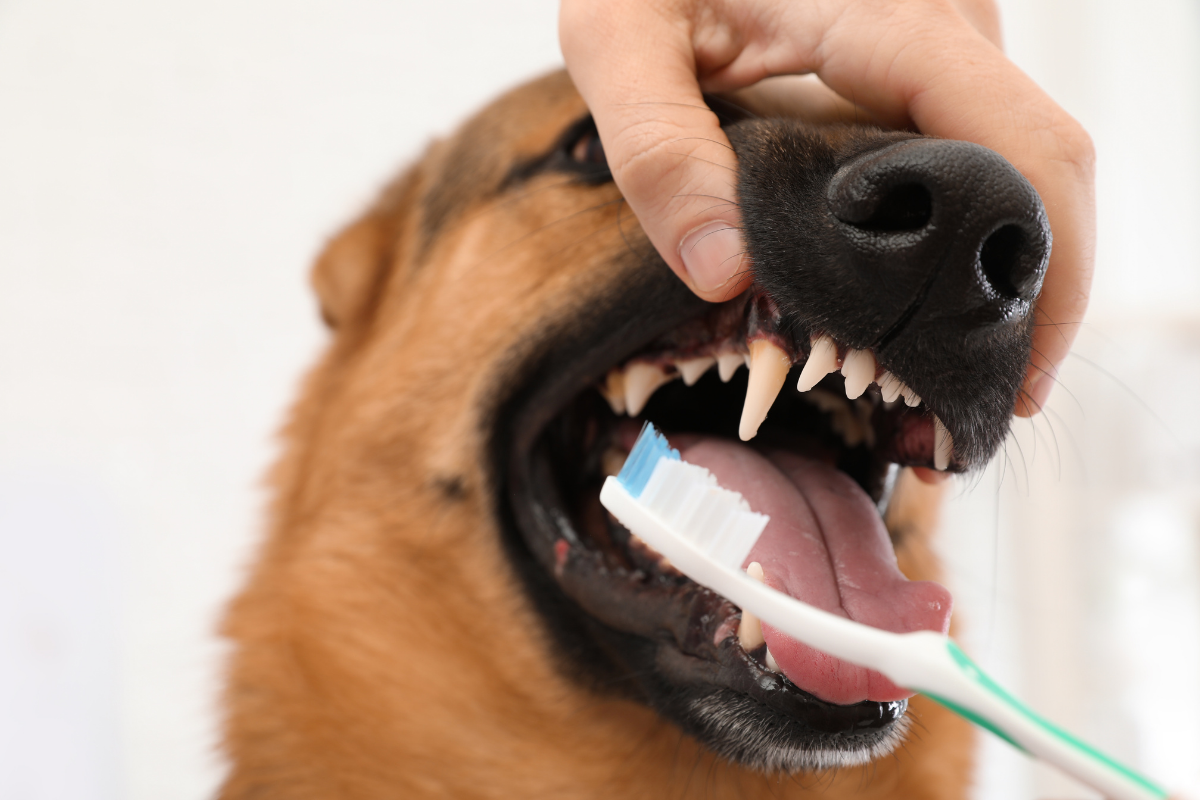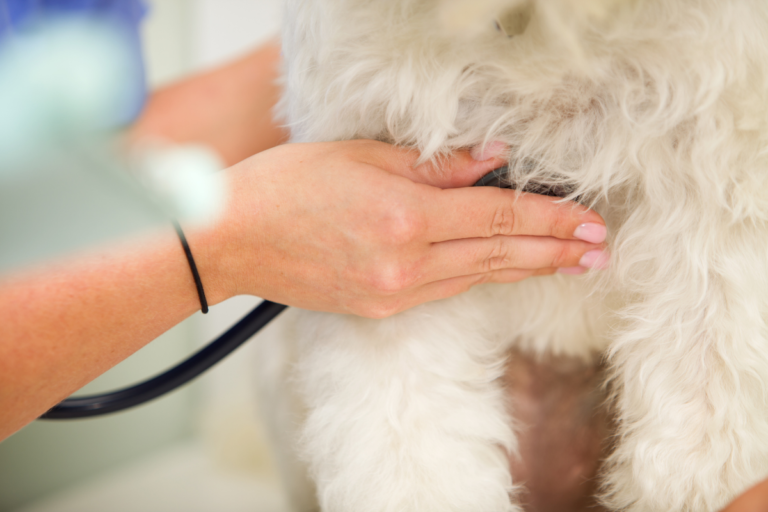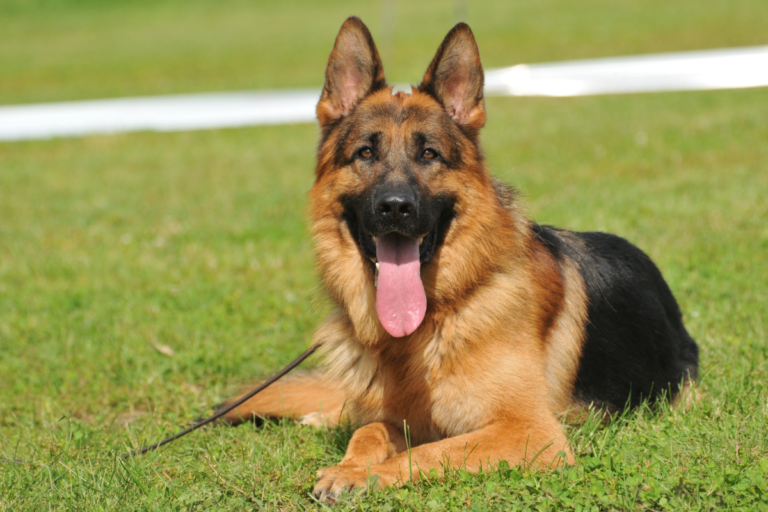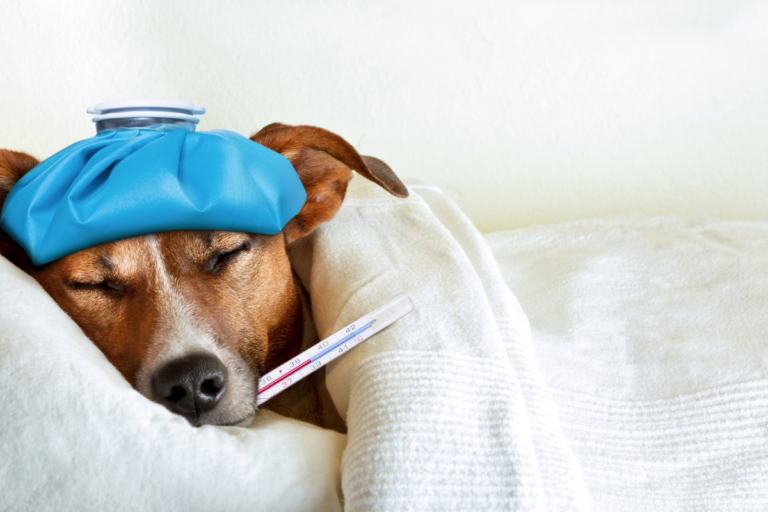Golden Rules for Canine Dental Health: What Every Dog Parent Should Know
Holistic Dog Health
Keeping our furry buddies in top shape means looking at their health from many angles, and one biggie is taking care of those chompers! In this bit, we’re tackling why dental care is a must and some handy tips to dodge common health hiccups for your pup.
Importance of Dental Care
Dental care? Yep, it’s not just about keeping breath fresh; it’s a game-changer for our pets’ happiness and well-being. Regular cleanings and home brushing sessions are crucial for that pearly smile and, more importantly, top-notch oral health. If we get lazy with the toothbrush, it could spell trouble with gums and teeth, causing not only a lotta ‘ouch’ but also tooth loss. No joke, bad dental care can even lead to big-deal problems like heart disease and diabetes.
Get this: over 80% of dogs over three have a dental boo-boo going on. We’re talking things from gingivitis to busted teeth, making it super clear why early checks and treatment are a lifesaver (PetMD). The best way to tackle dental care? Brushing often, getting those teeth professionally polished, and munching on a diet that helps oral health.
Preventing Common Health Issues
Nipping doggie health problems in the bud takes a bit of foresight. Regular vet check-ups and solid dental habits are real game changers for overall dog health. Here are some top tips for keeping your dog in tip-top condition:
- Daily Brushing: A good brushing habit with doggy toothpaste keeps nasty tartar away and gums happy. For more scoop on gingivitis prevention, flip through our dog gum disease piece.
- Professional Cleanings: Yearly scrubs from the vet help out where the toothbrush might slack. These visits can fend off some serious dental issues.
- Balanced Diet: Go for food that does double duty, cleaning teeth and filling tummies. Some dry foods and dental chews make cleaning a breeze.
- Regular Vet Visits: Keep those vet appointments to catch dental issues early before they turn into bigger worries.
| Common Health Issues | Prevention Paths |
|---|---|
| Tartar and Plaque | Daily brushing, dental chews |
| Gingivitis | Routine vet checks, pro cleanings |
| Tooth Fractures | Keep an eye on chew toys, avoid hard stuff |
| Systemic Diseases | Oral hygiene, balanced food |
Bad dental practices can lead to stuff like diabetes, heart and kidney troubles ’cause sneaky bacteria find a way into the bloodstream (Richland Animal Clinic). Want more on avoiding health baddies tied to dental issues? Hit up our dog diseases and symptoms page.
Getting serious about dog dental care and heading off health woes helps our pups live their best lives. Dive into more deets on how dental vibes affect health with our pieces on periodontal disease in dogs and dogs teeth.
Canine Dental Care Basics
Dental Cleaning and Brushing
Brushing our dog’s teeth should be as routine as making coffee in the morning. It helps keep those canine chompers sparkling! Skipping out on dental care can turn into a big ol’ mess with gum issues and even tooth skipping town on us. So, let’s skip that drama.
Get a toothbrush with soft bristles designed for pets and some doggy toothpaste. Introduce it slowly so our furballs don’t freak out. Turn it into a happy time with treats and a whole lot of doggy praise when they let us brush their teeth. It’ll be like their spa day, but for their mouth.
Periodontal Disease Prevention
Ah, periodontal disease. Sneaky and annoying. It starts like a sticky situation right after Fido has a chow-down but plays it coy. Before we know it, we’ve got hardened tartar causing chaos. Our best bet? Stick to a daily brushing routine. Think of it as banishing the plaque villain before it takes over. And getting professional cleanings once a year — it’s like taking our pups to the doggy dentist for a check-up, helping to kick leftover dirty business to the curb.
Tooth Fractures and Treatments
Dogs will be dogs — and sometimes, they chew on a bone just a smidge too hard. Teeth fractures aren’t fun, and they can get painful and grimy if we don’t act fast.
For those slight chips, it might just need a smooth operator (aka smoothing and sealing by the vet) to tidy it up. But if it’s a big break that shows the pulp, then our four-legged pal could be looking at root canal therapy or, the dreaded extraction. A trip to the vet’s office as soon as something’s amiss can save our furry friend a lot of toothy trouble.
| Causes | Treatment Options |
|---|---|
| Chewing on tough stuff | Smoothing and sealing |
| Oops moments (accidents) | Root canal therapy |
| Energetic antics | Extraction |
Spotting these dental dramas early makes our pups wag their tails a whole lot happier. For more doggy details, our dogs teeth guide holds all the answers we need.
Canine Dental Health Risks
Impact of Neglected Dental Hygiene
Skipping out on your pup’s dental care could lead to a load of issues you’d definitely want to dodge. That tiny mouth isn’t just there for slobbery kisses—it’s basically a cozy spot for bacteria. Without regular cleaning, plaque morphs into tartar, a rough surface that invites more plaque. This scenario often results in gum irritation, aka gingivitis. Luckily, this stage of gum disease is where things can still turn around (VCA Hospitals).
When periodontal disease strikes, it’s not just about bad breath. We’re talking inflamed gums and decaying jawbone, leading to pain and perhaps even some grumpiness from your four-legged friend. And if that’s not enough, heart disease might even join the guest list.
Here’s what you might notice when doggy dental disasters strike:
- Owies: Dental trouble means your furry buddy might be in pain.
- Swelling & Blood: Gums could puff up and bleed easily.
- Missing Chompers: Serious dental neglect might cause tooth loss.
- Shedding Pounds: Eating hurts, so your dog might eat less and lose weight.
- Mood Swings: Pain makes humans cranky, and the same goes for dogs.
| Dental Drama | What It Means |
|---|---|
| Plaque | Gooey layer of bacteria that clings to teeth |
| Tartar | Plaque gone rogue—hard and more bacteria-friendly |
| Gingivitis | Gum grumbling and the first red flag of gum disease |
| Periodontitis | Advanced decay, threatening teeth and bone |
Looking for more info on dog gum disease? We have just the article for you.
Link Between Dental Disease and Systemic Health
A dirty dog mouth isn’t just a funky smell waiting to happen. The bacteria lurking amidst those flashy fangs can end up slipping into the bloodstream and wreaking havoc on important organs (Richland Animal Clinic).
Yes, it’s wild—but studies show that sketchy doggy dental hygiene might mess with things like diabetes, heart troubles, or kidney flubs (PetMD). Especially those nasty advanced stages of gum disease have a bad habit of hitching a ride straight to chronic kidney problems and body-wide inflammation.
- Ticker Troubles: Heart disease could be on the horizon with poor dental care.
- Organ Intrusions: Bacteria from the mouth might start a party in the kidneys and liver.
- Diabetes Headaches: Dental hassle can make managing diabetes torturous.
- Fiery Inflammation: Lingering infections could trigger raging inflammation.
To slide clear of these snafus, sticking to routine tooth cleanings and letting the pros handle it annually keeps your pup safer. A clean mouth equals a healthier dog. For the scoop on keeping those chomping tools sparkly and more preventative advice, pop over to our tips for straightening curly hair and periodontal disease in dogs pages.
Don’t just brush off those dental duties! Regularly chat with your vet about the top-notch ways to maintain your dog’s mouth. After all, a clean mouth means a happy, wagging tail!
Best Practices for Dog Dental Hygiene
Keeping our dogs’ chompers in check is crucial for their overall well-being. With a few tricks up our sleeves, we can make sure those tails keep waggin’. Let’s talk about brushing, picking the right toothpaste, and why those professional dental visits matter.
Daily Brushing and Toothpaste Selection
Brushing every day? You betcha! It’s like giving your pooch a daily spa trip… for their mouth. Dentists say it helps to wave bye-bye to those pesky germs and gunk before they go all nasty on our pal’s teeth. Get yourself a special dog toothbrush and canine toothpaste—no swiping the human stuff; it’s a no-no for them.
When brushing, go easy with small circles on teeth and gums. Do it regularly and make it part of the daily groove to keep that doggie breath more “hello” and less “whoa.”
| Essential Items for Brushing | Description |
|---|---|
| Canine Toothbrush | Built for doggy jaws, cleaning all nooks and crannies. |
| Canine Toothpaste | Yummy flavors that dogs dig – safe, too. |
Want to know more about the perfect gear? Check out the lowdown on dogs teeth.
Professional Dental Cleanings and Services
Even with all that brushing at home, our furballs sometimes need the pros to step in. A yearly deep clean with the pet dentist is the ticket (Richland Animal Clinic). They’ve got the tools to zap off the tartar and plaque that’s slipped through our daily routine. Plus, they check for any dental hiccups, so we catch stuff before it gets grumpy.
Here’s what they’ll do:
- Knock out a full mouth check while under a little snooze.
- Get those teeth scrubbed and shiny.
- See if there’s any breakage or gum funk.
Doing this regularly helps dodge major health blowups down the line. Curious about what goes down? Peek at our insights on dog gum disease.
Stick with these simple steps, and we’ll keep our pooches chomping happily ever after. For more tips on pooch health, sniff around our goodies on dog heart disease, periodontal disease in dogs, and dog diabetes symptoms.
Understanding Periodontal Disease
So, let’s chat about something that’s pretty important when it comes to our four-legged pals: their dental health. You know how some folks turn into grouches when they have a toothache? Well, it’s kinda similar for our pups with periodontal disease. It’s a sneaky culprit that messes with the bits and bobs surrounding their teeth like gums, bone, and that tight ligament and cementum stuff. This troublemaker kicks off with gingivitis—think red gums and fishy breath—and might just cost them a tooth if we’re not careful.
Progression of Periodontal Disease
Periodontal drama unfolds stage-by-stage in pups, with gingivitis as the unwelcome opening act. If we don’t step in, things could cost us more than a pet dental bill:
| Stage | Description | Symptoms |
|---|---|---|
| Stage 1 | Gingivitis | Red, swollen gums, funky breath |
| Stage 2 | Early Periodontitis | Plaque and tartar saying hello, subtle bone retreat |
| Stage 3 | Moderate Periodontitis | Bone jumping ship, bleed-prone gums, shaky teeth |
| Stage 4 | Advanced Periodontitis | Bones screamin’ “we outta here,” wobbly teeth, pus party |
Gingivitis: At first, we might just see some angry, red gums paired with, let’s admit, a not-so-pleasant aroma. But, nip it in the bud with some good ol’ dental care, and we could turn back time here.
Early Periodontitis: Here, plaque and tartar are like uninvited houseguests, starting to take bone as a souvenir. Fido might show that “Eww” face when munching kibble.
Moderate Periodontitis: With further bone waving goodbye, gums opt for dramatic bleeds, and those chompers start looking for a change of address.
Advanced Periodontitis: Now here, we’re talking severe bone AWOL. Teeny pus parties might start up shop as gums look like they’re in full retreat mode.
Peek at our super handy guide on fending off and tackling this issue right here.
Tooth Fractures and Treatment Options
Now, onto cracked chompers! You know how some dogs just gotta chew everything like it’s a snack? Well, sometimes they go a step far and end up with fractured teeth, mostly from gnawing on things like rocks, bones, and those indestructible-like toys.
Treatment Options:
| Treatment | Description | Best For |
|---|---|---|
| Extraction | Pulling out the busted tooth, so inflammation chills | Major fractures, those tiny potato breeds |
| Root Canal | Evicting the dead stuff inside and filling up with friendly stuff | Save-worthy canine teeth, bigger dogs |
Extraction: Basically, it’s ‘bye-bye tooth’—yank it out and wave goodbye to inflammation and infection hubs. Usually, this is the go-to when fractures get all dramatic or if the pup’s on the petite side.
Root Canal: This is where they scoop out the dead parts of a tooth and fill it with stuff that’s cool with the body. This option’s a lifesaver for teeth we absolutely can’t part with—especially in those big-boned breeds.
Give those sharp teeth a break with chew toys and dental goodies that go bendy under pressure. Keeping our buddies’ mouths clean and fresh may stop fractures and gum problems from becoming headline news. For tips on upscaling your dog’s tooth care game, check out our handy article on dog dental hygiene practices and the vital bits on dog gum disease.
And if your curiosity still isn’t satisfied, plunge into our treasure trove of resources about dental issues in dogs.
Breed-Specific Health Concerns
Dog health comes with as many quirks as there are breeds. Here, we’re talkin’ about the health quirks of Bulldogs, Beagles, and Shih Tzus. Knowing these little bumps in the road helps us give our four-legged compadres the best care possible.
Health Challenges in Bulldogs
Oh, Bulldogs. Aren’t they just a bundle of adorably squished faces? Those charming mugs can bring on not-so-charming breathing troubles. Their cute snouts come with tiny nostrils, a lengthy soft palate, and a skinnier windpipe, which make pulling in air kinda challenging. Throw in some hot weather or a run in the park and that could spell trouble real quick.
| Health Challenge | Description |
|---|---|
| Respiratory Problems | Tiny nostrils, elongated soft palate, skinny windpipe |
| Risk Factors | Heat stress, too much playtime |
For more juicy Bulldog health deets, peek at bulldog health problems.
Breed-Specific Ailments in Beagles
Now, Beagles love sniffing out a trail, but epilepsy likes to find them. They might have a seizure or two starting from 6 months to 3 years old. While you can’t totally zap away epilepsy, you can often keep it in check with the right meds (WebMD).
| Health Challenge | Description |
|---|---|
| Epilepsy | Seizures kicking off between 6 months and 3 years |
| Management | Control with antiseizure meds |
Get the scoop on Beagle health quirks over at beagle health problems.
Common Health Issues in Shih Tzus
Shih Tzus may prance about regally, but wobbly kneecaps could have them taking a hop, skip, and a jump more often than not. Known as patellar luxation, it’s where that kneecap plays hide and seek. It might slide back where it belongs, but seriously pesky cases could need surgery to keep arthritis at bay.
| Health Challenge | Description |
|---|---|
| Patellar Luxation | Kneecap plays hide and seek |
| Treatment | Surgery for the tricky cases |
For more on Shih Tzu health hiccups, check out shih tzu health problems.
Tuning into the health quirks of these doggos is like unlocking the secret to happier wagging tales. Being in the know helps us take preventive steps and dish out the care they deserve. Seeking to be Dr. Doolittle? Dig further into dog diseases and symptoms and dog heart disease.






